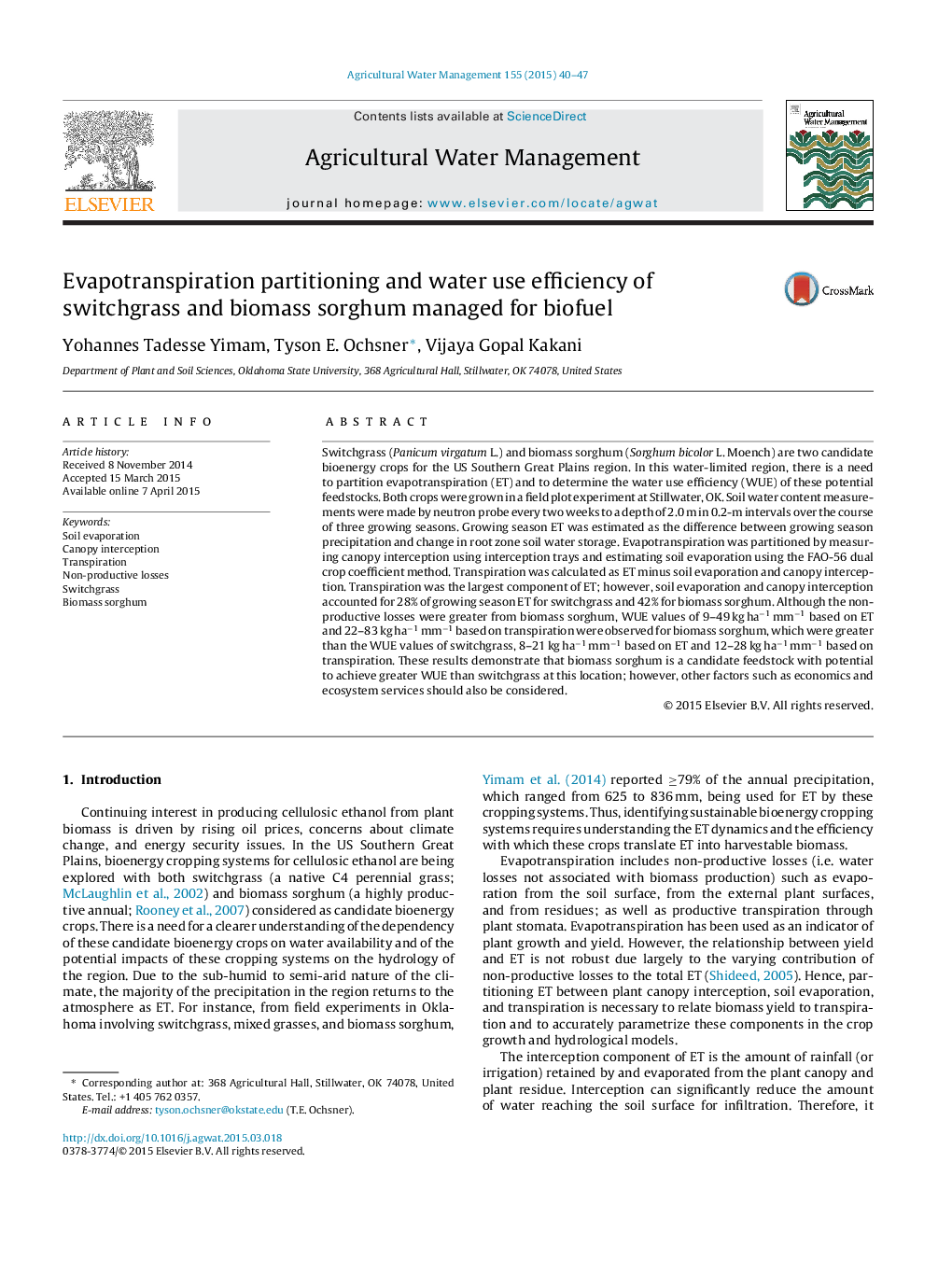| کد مقاله | کد نشریه | سال انتشار | مقاله انگلیسی | نسخه تمام متن |
|---|---|---|---|---|
| 6363769 | 1622924 | 2015 | 8 صفحه PDF | دانلود رایگان |
- ET and water use efficiency were estimated for switchgrass and biomass sorghum.
- For both crops, canopy rainfall interception was >25% of growing season rainfall.
- Biomass sorghum had greater non-productive losses than switchgrass.
- However, biomass sorghum also had greater water use efficiency than switchgrass.
Switchgrass (Panicum virgatum L.) and biomass sorghum (Sorghum bicolor L. Moench) are two candidate bioenergy crops for the US Southern Great Plains region. In this water-limited region, there is a need to partition evapotranspiration (ET) and to determine the water use efficiency (WUE) of these potential feedstocks. Both crops were grown in a field plot experiment at Stillwater, OK. Soil water content measurements were made by neutron probe every two weeks to a depth of 2.0 m in 0.2-m intervals over the course of three growing seasons. Growing season ET was estimated as the difference between growing season precipitation and change in root zone soil water storage. Evapotranspiration was partitioned by measuring canopy interception using interception trays and estimating soil evaporation using the FAO-56 dual crop coefficient method. Transpiration was calculated as ET minus soil evaporation and canopy interception. Transpiration was the largest component of ET; however, soil evaporation and canopy interception accounted for 28% of growing season ET for switchgrass and 42% for biomass sorghum. Although the non-productive losses were greater from biomass sorghum, WUE values of 9-49 kg haâ1 mmâ1 based on ET and 22-83 kg haâ1 mmâ1 based on transpiration were observed for biomass sorghum, which were greater than the WUE values of switchgrass, 8-21 kg haâ1 mmâ1 based on ET and 12-28 kg haâ1 mmâ1 based on transpiration. These results demonstrate that biomass sorghum is a candidate feedstock with potential to achieve greater WUE than switchgrass at this location; however, other factors such as economics and ecosystem services should also be considered.
Journal: Agricultural Water Management - Volume 155, June 2015, Pages 40-47
